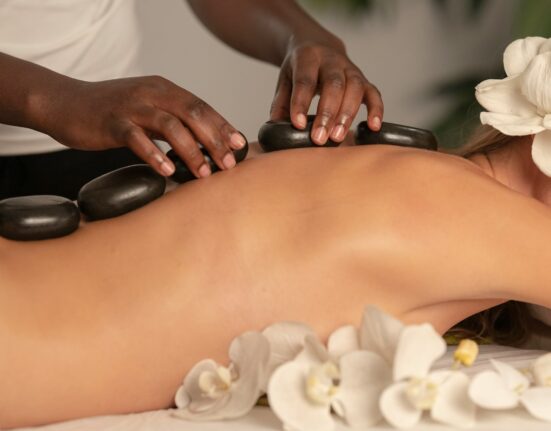Stepping into the world of massage therapy is like standing at the edge of a vast ocean of possibilities. Aspiring massage therapists often find themselves at a crossroads, pondering which modality will best serve their clients and enhance their practice.
Navigating through this plethora of techniques, from the soothing stroking of Swedish massage to the intricate pressures of Reflexology, requires not only passion but also a strategic understanding of each method’s unique benefits and applications.
This blog post seeks to illuminate the path for those new to this healing arts profession, offering insights into how different massage modalities can be tailored to meet diverse client needs. By equipping yourself with this knowledge, you’re not just learning a trade; you’re embarking on a meaningful career that promises to enrich both your life and the lives of those you touch.
The Foundation of Swedish Massage
History and Evolution
The Swedish Massage is often considered the foundation of all massage therapies. Developed in the early 19th century by Swedish physiologist Per Henrik Ling, this technique focuses on long, flowing strokes, kneading, and rhythmic tapping. It aims to relax the entire body, improving circulation and flexibility.
Techniques and Benefits
This is characterized by its gentle yet effective techniques. It involves five main strokes, effleurage, petrissage, tapotement, friction, and vibration, each serving a unique purpose. These strokes help in relieving muscle tension, increasing blood flow, and promoting relaxation. Clients often seek Swedish Massage for its soothing effects and ability to alleviate stress, making it a staple in many therapeutic practices.
Ideal Client Base
This massage is perfect for clients new to massage or those looking for relaxation. It’s also beneficial for individuals experiencing muscle soreness or those recovering from an intense workout. By offering this massage, therapists can cater to a broad audience, enhancing their clientele and expanding their practice.
Deep Tissue Massage for Chronic Pain Relief
Understanding Deep Tissue Massage
Unlike the gentle nature of Swedish Massage, Deep Tissue focuses on realigning deeper layers of muscles and connective tissue. It’s especially beneficial for chronic pain relief and reducing muscle tension in the body. This modality targets the thicker muscle layers and fascia, providing long-lasting relief.
Techniques and Applications
Deep Tissue Massage employs slower strokes and deeper pressure, concentrating on areas of tension and tightness. Techniques such as stripping and friction are used to break down adhesions and improve mobility. Clients suffering from chronic pain, stiffness, or postural problems can significantly benefit from this targeted approach.
Client Suitability and Cautions
While Deep Tissue offers numerous benefits, therapists need to communicate with their clients about pressure and comfort levels. This modality is ideal for individuals familiar with massage and those seeking relief from chronic issues. However, it may not be suitable for everyone, so always assess each client’s condition and preferences before proceeding.
Shiatsu Massage and Traditional Healing
Origins and Principles
Originating from Japan, Shiatsu is grounded in traditional Chinese medicine principles. This modality emphasizes the concept of energy flow, or “Qi,” and uses finger pressure to balance the body’s energy meridians. It provides a holistic approach to healing, addressing both physical and emotional well-being.
Techniques and Holistic Benefits
It involves applying pressure with fingers, palms, and elbows along specific energy pathways. This technique can help alleviate stress, improve circulation, and enhance the body’s natural healing abilities. Clients often describe a sense of deep relaxation and rejuvenation, making it a sought-after choice for holistic wellness.
Target Audience
It is ideal for clients seeking a natural approach to health and wellness. It’s beneficial for those dealing with stress, fatigue, or emotional imbalances. By incorporating it into their practice, therapists can offer a unique experience that combines physical and energetic healing, appealing to a diverse clientele.
The Art of Reflexology
Concept and Origin
Reflexology is based on the premise that specific points on the feet, hands, and ears correspond to different body organs and systems. This modality dates back to ancient Egypt and China, where it was practiced as a form of healing therapy. It aims to promote balance and relaxation throughout the body.
Techniques and Health Benefits
Reflexologists use thumb and finger techniques to apply pressure to reflex points, stimulating the body’s natural healing processes. This practice can help alleviate stress, improve digestion, and reduce pain and anxiety. Clients often report improved overall well-being and a deep sense of relaxation after a Reflexology session.
Who Should Try Reflexology?
It is suitable for individuals looking for a non-invasive therapy that complements other treatments. It’s ideal for clients seeking stress relief, better sleep, and enhanced vitality. By offering Reflexology, therapists can attract clients interested in alternative healing methods and holistic care.
Affordable Massages for All
Making Massage Accessible
One of the significant challenges in the massage industry is accessibility. Many people find regular massages financially burdensome. However, offering affordable massages can greatly expand a therapist’s client base and make wellness accessible to a broader audience.
Strategies for Affordable Offerings
Therapists can consider offering package deals, loyalty programs, or sliding scale pricing to make their services more affordable. Collaborating with local businesses or wellness centers for promotions can also attract more clients. By implementing these strategies, therapists can ensure that high-quality massage services are within reach for eFveryone.
Building a Loyal Clientele
Affordable options not only attract new clients but also build loyalty. Clients appreciate value for money, and providing excellent service at a reasonable price encourages repeat visits. This approach can lead to word-of-mouth referrals, enhancing a therapist’s reputation and business growth.
Conclusion
Understanding different modalities is essential for any aspiring therapist looking to excel in this field. Each modality, from Swedish to Reflexology, offers unique benefits and caters to specific client needs. By incorporating a range of techniques into their practice, therapists can provide personalized care that enhances client satisfaction and retention.
Ultimately, the goal is to create a welcoming environment where clients feel valued and cared for. By offering diverse services and ensuring affordability, therapists can make a significant impact on their clients’ well-being and establish a thriving practice.
For those eager to deepen their knowledge and skills, consider enrolling in specialized workshops or certification programs. These opportunities provide valuable insights and hands-on experience, helping therapists refine their craft and stay ahead in the industry.
Remember, the path to becoming a successful massage therapist is a rewarding one. It requires dedication, continuous learning, and a genuine passion for helping others. With the right knowledge and skills, you can transform your practice and make a lasting difference in the lives of your clients.








Leave feedback about this